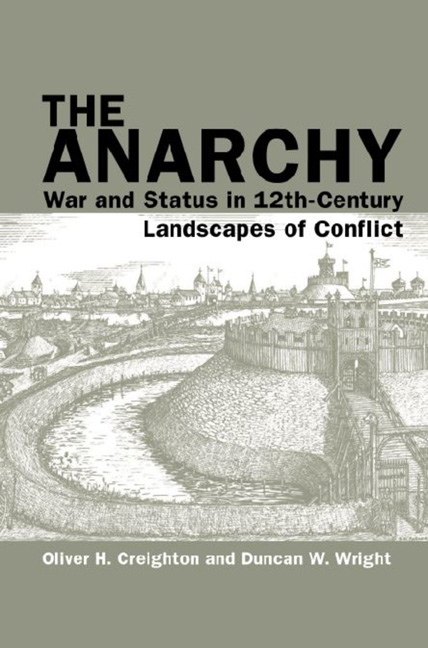Book contents
- Frontmatter
- Contents
- Acknowledgements
- List of Figures
- List of Colour Plates
- Chapter 1 Introduction
- Chapter 2 Historical Outline and the Geography of ‘Anarchy’
- Chapter 3 Waging War: Fields of Conflict and Siege Warfare
- Chapter 4 Architecture and Authority: Castles
- Chapter 5 Material Culture: From Arts to Coins
- Chapter 6 Performing Violence: Arms, Armour and Military Apparel
- Chapter 7 Faith and Fortification: The Church
- Chapter 8 Town, Village and Country
- Chapter 9 Anarchy on the Fen Edge: Case Study of the Isle of Ely
- Chapter 10 The Twelfth-Century Civil War in Context: Assessment and Reassessment
- Appendix Key Sites to Visit
- Bibliography
- Index
- Plate section
Chapter 7 - Faith and Fortification: The Church
- Frontmatter
- Contents
- Acknowledgements
- List of Figures
- List of Colour Plates
- Chapter 1 Introduction
- Chapter 2 Historical Outline and the Geography of ‘Anarchy’
- Chapter 3 Waging War: Fields of Conflict and Siege Warfare
- Chapter 4 Architecture and Authority: Castles
- Chapter 5 Material Culture: From Arts to Coins
- Chapter 6 Performing Violence: Arms, Armour and Military Apparel
- Chapter 7 Faith and Fortification: The Church
- Chapter 8 Town, Village and Country
- Chapter 9 Anarchy on the Fen Edge: Case Study of the Isle of Ely
- Chapter 10 The Twelfth-Century Civil War in Context: Assessment and Reassessment
- Appendix Key Sites to Visit
- Bibliography
- Index
- Plate section
Summary
THE EVIDENCE of documents produced and curated by religious institutions has tended to dominate narratives of Stephen's reign; indeed, we have inevitably come to understand ‘the Anarchy’ largely through the prism of ecclesiastical writers. The medieval Church as an institution was a central pillar of society that influenced corporate identity and individual behaviour in different ways, although it was not a monolithic and immovable organisation but instead comprised myriad groups and personnel with varying perceptions of Christianity. This chapter combines analysis of the textual sources with archaeological and other material evidence to assess the consequences of the civil war for ecclesiastical institutions, communities and structures. The following account considers, in turn, churches, monasteries and bishops’ palaces, to explore how the conflict impacted upon patterns of patronage and building, and to consider the place of these sites within the militarisation of the landscape.
Church and Civil War
Any consideration of the impact of ‘the Anarchy’ on the Church throws up some immediate contradictions. From one perspective, this was a period of enormous turbulence and crisis for the Church, with bishops embroiled in the conflict, monastic lands seized and ravaged, and churches burned or fortified. Damage to church buildings and property is attested by the horror-struck reactions of chroniclers both in generic terms and through specific references to named institutions that were attacked or suffered collateral damage. A map of documented instances of church fortification and damage to ecclesiastical property is presented in Figure 7.1. What makes this level of damage especially remarkable is the fact that the Church was instrumental in the western European ‘peace movement’ of the eleventh and twelfth century that sought to suppress the excesses of war, including pillage and violence towards ecclesiastical property. The paradox is that churches were targeted, seemingly as never before, in the very period in which knighthood was emerging as a Christian vocation and the ideals of chivalry were crystallising. From another viewpoint, however, the mid-twelfth century saw a dramatic upsurge in religious patronage, especially through the foundation of houses of the new orders and gifts to established family monasteries. This was well understood at the time: for example, William of Newburgh comments that more monasteries were established in Stephen's reign than over the entire preceding century.
- Type
- Chapter
- Information
- The AnarchyWar and Status in 12th-Century Landscapes of Conflict, pp. 185 - 218Publisher: Liverpool University PressPrint publication year: 2017



